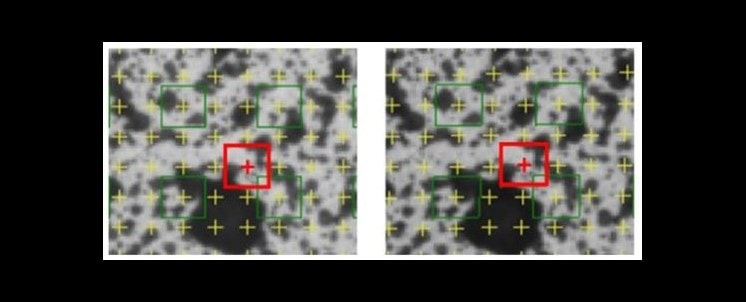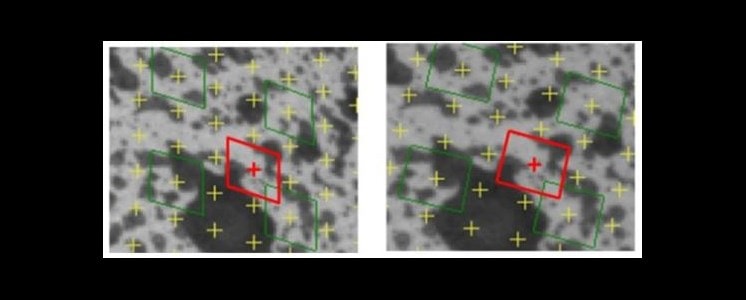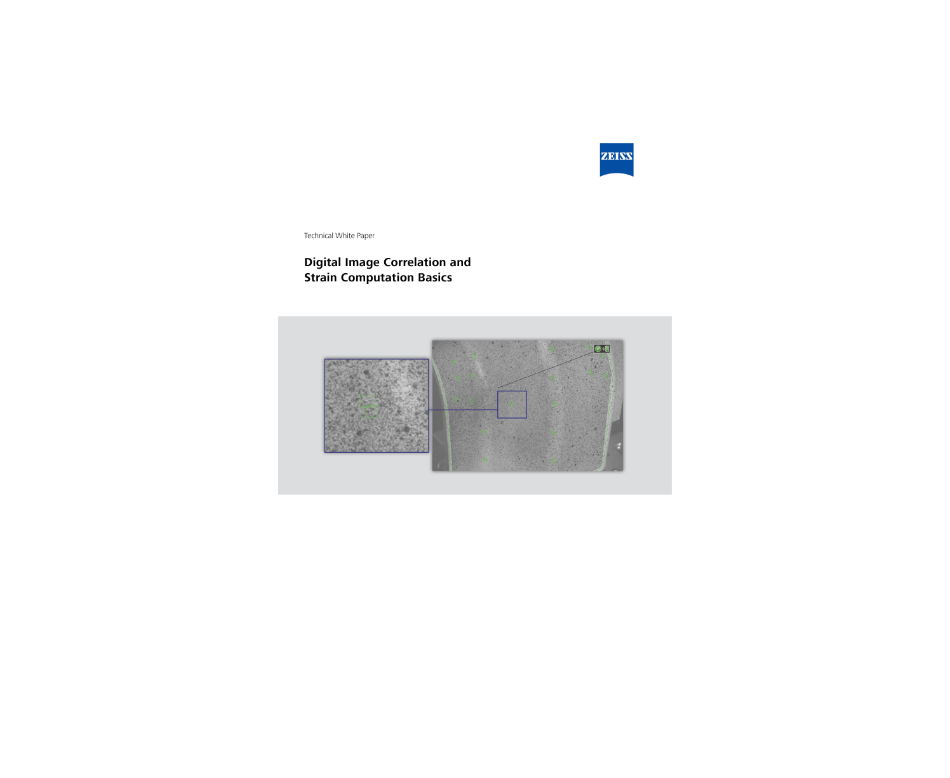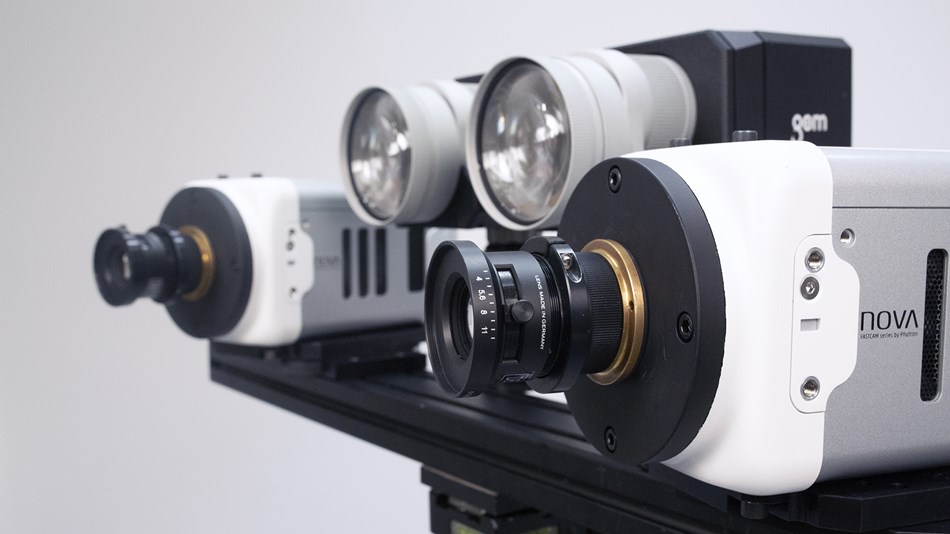Digital Image Correlation
Digital Image Correlation: Motion and Deformation Analysis
What is digital image correlation?
Digital Image Correlation (DIC) is a procedure to compute 2D or 3D coordinates from recorded single images or image series of either a single camera, a stereo camera or a multi-camera system. If the image acquisition is carried out over a certain period, measurement results for displacements, velocities and accelerations in 2D or 3D can be derived. By interpreting local displacements between the 2D or 3D coordinates, strain values and strain rates can be calculated. Typical for DIC results is that they are available as full-field measuring data from the test specimens’ surface based on thousands of 2D or 3D coordinates with very high local resolution.
How does digital image correlation work?
To perform a DIC measurement, usually the surface of the test specimens is prepared with an adequate pattern. Patterns can be applied using, for example, spray cans, brushes, printing, etc. As long as the pattern moves and deforms with the specimens’ surface during testing, the pattern application technique plays a subordinate role.
Before performing a test, the DIC system is set up to the desired field of view and calibrated. For a single camera system, the lens distortion parameters and pixel scaling are defined. For a stereo or multi-camera DIC system, the relative camera orientations are derived additionally. In the following, this article focuses only on stereo camera systems, as this is the most common configuration.
After the setup and before the test starts, so-called reference images or a reference stage are captured with the left and the right camera. These captured images serve as a displacement and strain reference for all further evaluations. During the test, an image acquisition is carried out depending on the test requirements, i. e., image acquisition frequency, exposure time, and so on.
A matrix of facets (subsets) with an application-dependent size and distance is overlaid on the initial reference image of the left camera. This matrix consists of thousands of facets. The facets are used to compute 3D coordinates by evaluating the gray value distribution in each facet and reidentifying it in the reference image of the right camera. From the centers of the facets in the left camera images and in the right camera images, 3D coordinates are triangulated with the help of the calibration data from the DIC sensor. The identification of corresponding facets in the left and the right camera images and through all images over time is done in the subpixel range, thus, leading to a much higher accuracy as compared to just the pixel scaling.

Left and right reference image with facet overlay

Left and right deformed image with facet overlay
The initial results from DIC are 3D coordinates from the specimens’ surface over time. Subtracting the 3D coordinates from all recorded stages over time from the 3D coordinates of the reference stage lead to 3D displacement values. In addition, with the time derivatives of the displacement values 3D velocities and 3D accelerations are calculated.
A local plane strain tensor, considering the relative displacements between the calculated 3D coordinates, delivers surface strain measures in X-direction and Y-direction as well as the principle strains (major and minor strain) and the strain rates as time derivatives.
Where is digital image correlation used?
Today DIC is widely used in most industry segments and in research and development at universities and research facilities. With its non-contact principle and the ability to measure and evaluate motions, deformations, strains, velocities and accelerations, DIC is a versatile tool in the areas of materials and component testing.
DIC replaces traditional measuring devices, such as LVDTs, strain gauges and accelerometers because of the ease of specimen and measurement preparation.
The available digital camera technology supports high-resolution images and high-speed imaging up to frequencies of 5 MHz, what opens more application fields.


